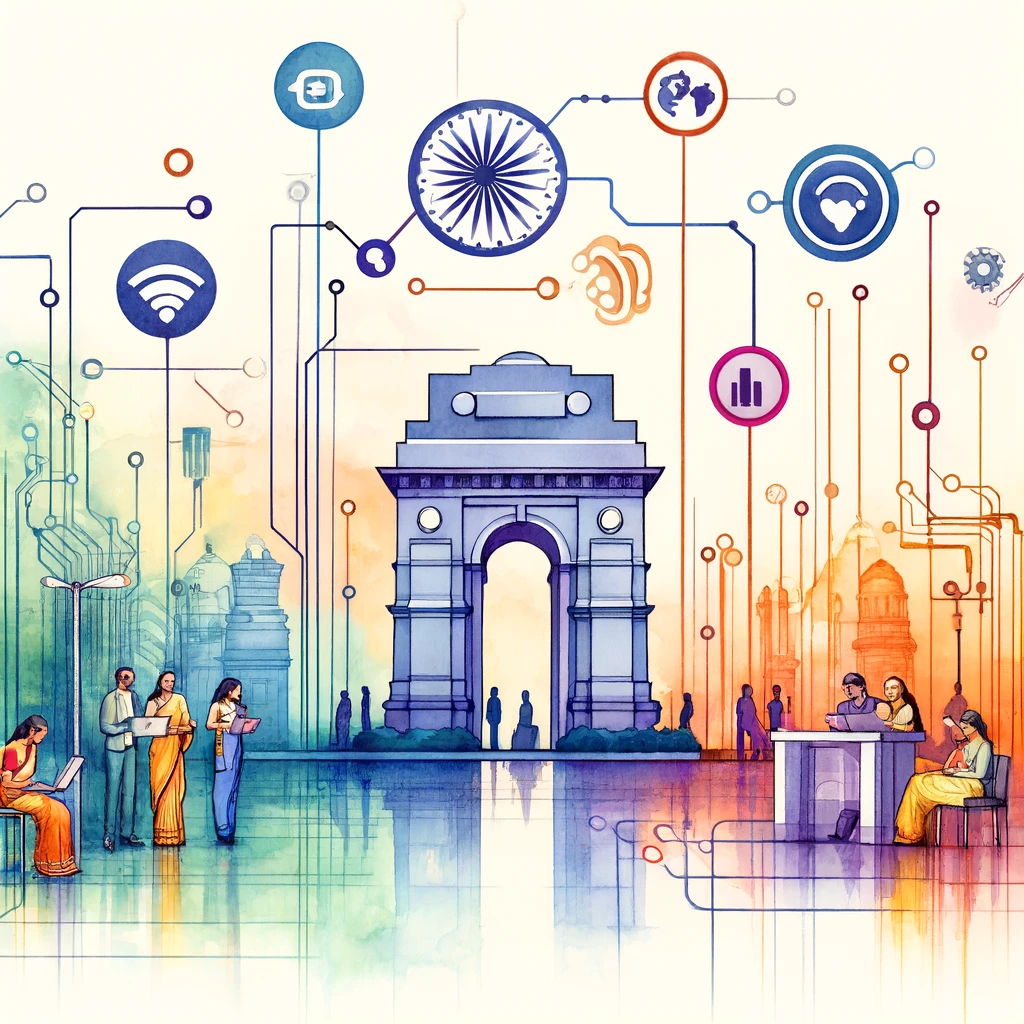Overview of Digital India Initiative
The Digital India initiative, launched by the Government of India in July 2015, aims to transform India into a digitally empowered society and knowledge economy. This ambitious program seeks to ensure that government services are made available to citizens electronically by improving online infrastructure and increasing internet connectivity. The vision of Digital India is centered on three key areas: digital infrastructure as a utility to every citizen, governance and services on demand, and digital empowerment of citizens. By bridging the digital divide and promoting inclusive growth, Digital India is poised to revolutionize the way the country functions and interacts with the world.

Key Pillars and Components
The Digital India initiative is structured around nine pillars, each targeting a specific aspect of the digital ecosystem:
- Broadband Highways: This pillar aims to provide high-speed internet connectivity across rural and urban India. It includes the development of a robust broadband infrastructure to ensure seamless connectivity.
- Universal Access to Mobile Connectivity: Ensuring mobile connectivity in rural and remote areas to bring every citizen within the reach of mobile services, facilitating communication and digital services.
- Public Internet Access Program: Establishing Common Service Centers (CSCs) and Post Offices as multi-service centers to provide various e-services to citizens, especially in rural areas.
- e-Governance – Reforming Government through Technology: Simplifying government processes through technology, including online applications and tracking, workflow automation, and the use of IT to make governance more efficient and transparent.
- e-Kranti – Electronic Delivery of Services: Providing a wide range of electronic services to citizens in areas such as healthcare, education, agriculture, and justice, ensuring that government services are accessible and efficient.
- Information for All: Promoting transparency and accountability by providing open access to information through online hosting of data and documents, enhancing citizen engagement in governance.
- Electronics Manufacturing: Encouraging the domestic production of electronic goods to reduce dependence on imports and boost the Make in India initiative, thereby creating jobs and fostering innovation.
- IT for Jobs: Focusing on skill development and training in IT to equip the youth with the necessary skills for employment in the digital economy.
- Early Harvest Programs: Quick-win projects to generate immediate impact, such as Wi-Fi in public spaces, biometric attendance in government offices, and the adoption of cloud services for government departments.

Implementation and Progress
Since its inception, the Digital India initiative has achieved several milestones and made significant progress:
- Aadhaar: The Unique Identification Authority of India (UIDAI) has issued over 1.25 billion Aadhaar numbers, facilitating digital identity and authentication for various services.
- Digital Payments: Initiatives like the Unified Payments Interface (UPI), BHIM app, and DigiLocker have revolutionized digital transactions, making them more secure and accessible.
- Internet Connectivity: The BharatNet project aims to provide high-speed broadband connectivity to all 250,000 Gram Panchayats. As of now, significant progress has been made, with many villages already connected.
- e-Governance Services: Portals like MyGov, e-Pathshala, and National Scholarship Portal have been launched to provide various services online, enhancing accessibility and efficiency.
- Common Service Centers (CSCs): Over 300,000 CSCs have been established across the country, offering a wide range of digital services to citizens, particularly in rural areas.
Challenges and Solutions
Despite the progress, the Digital India initiative faces several challenges:
- Digital Divide: A significant portion of the population, particularly in rural areas, lacks access to digital services due to inadequate infrastructure and low digital literacy.
- Solution: Intensify efforts to expand internet connectivity in rural areas and implement digital literacy programs to educate citizens about using digital services.
- Cybersecurity: With the increasing reliance on digital platforms, the threat of cyber-attacks and data breaches has become a critical concern.
- Solution: Strengthen cybersecurity measures by developing robust policies, investing in advanced security technologies, and promoting awareness about cyber hygiene.
- Infrastructure Issues: Inconsistent power supply, inadequate bandwidth, and lack of last-mile connectivity hinder the implementation of digital services.
- Solution: Invest in infrastructure development, ensure reliable power supply, and enhance last-mile connectivity through public-private partnerships.
- Resistance to Change: Traditional bureaucratic processes and resistance to adopting new technologies can slow down the implementation of e-governance reforms.
- Solution: Conduct training programs for government employees, promote a culture of innovation, and streamline processes to facilitate the adoption of digital technologies.

Future Prospects
The future of Digital India is promising, with several initiatives and policy measures planned to sustain and enhance its momentum:
- 5G Rollout: The introduction of 5G technology will significantly boost internet speeds and connectivity, enabling advanced digital services and applications.
- Artificial Intelligence (AI) and Blockchain: Integrating AI and blockchain technology into various sectors can enhance service delivery, improve security, and drive innovation.
- Expansion of e-Governance: Continued efforts to digitize government services and promote e-governance will improve efficiency, transparency, and citizen engagement.
- Skill Development: Expanding IT for Jobs programs to include emerging technologies will equip the workforce with the skills needed for the digital economy.
- Sustainable Development: Leveraging digital technologies to address environmental and sustainability challenges, such as smart city initiatives and digital solutions for agriculture.
Conclusion
The Digital India initiative is a transformative step towards creating a digitally empowered society and knowledge economy. While significant progress has been made in expanding digital infrastructure, enhancing e-governance, and promoting digital literacy, continued efforts are needed to overcome challenges and sustain the momentum. By leveraging emerging technologies and fostering an inclusive digital ecosystem, India can achieve its vision of a digitally connected and empowered nation, driving economic growth and improving the quality of life for its citizens.


